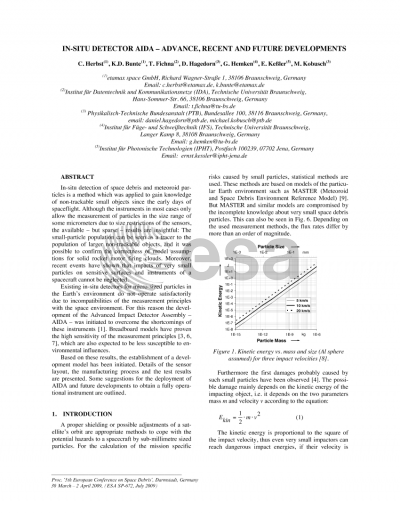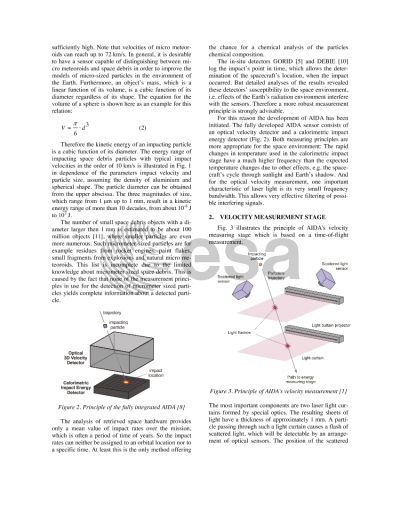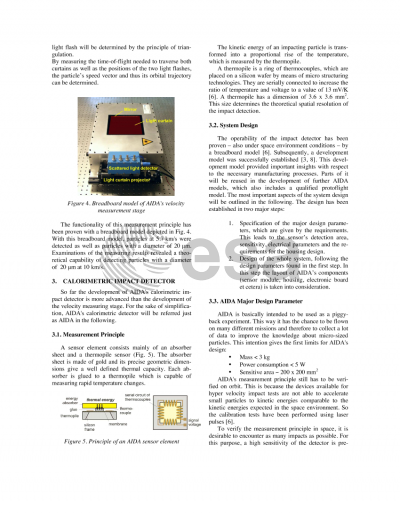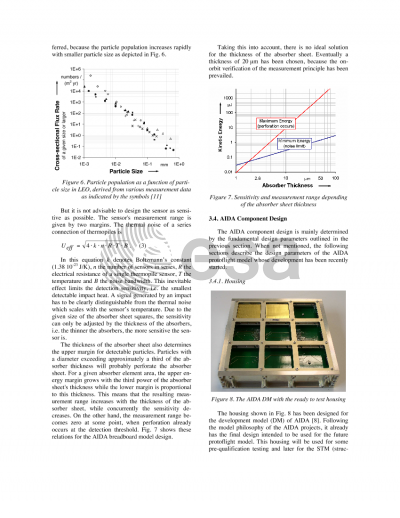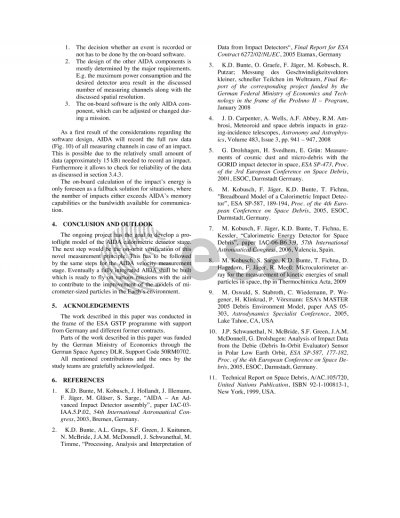Document details

Abstract
In-situ detection of space debris and meteoroid particles is a method which was applied to gain knowledge of non-trackable small objects since the early days of spaceflight. Although the instruments in most cases only allow the measurement of particles in the size range of some micrometers due to size restrictions of the sensors, the available - but sparse - results are insightful: The small-particle population can be seen as a tracer to the population of larger non-trackable objects, and it was possible to confirm the correctness of model assumptions for solid rocket motor firing clouds. Moreover, recent events have shown that impacts of very small particles on sensitive surfaces and instruments of a spacecraft cannot be neglected.Existing in-situ detectors for micro-sized particles in the Earth's environment do not operate satisfactorily due to incompatibilities of the measurement principles with the space environment. For this reason the development of the Advanced Impact Detector Assembly - AIDA - was initiated to overcome the shortcomings of these instruments [1]. Breadboard models have proven the high sensitivity of the measurement principles [3, 6, 7], which are also expected to be less susceptible to environmental influences.Based on these results, the establishment of a development model has been initiated. Details of the sensor layout, the manufacturing process and the test results are presented. Some suggestions for the deployment of AIDA and future developments to obtain a fully operational instrument are outlined.
Preview
